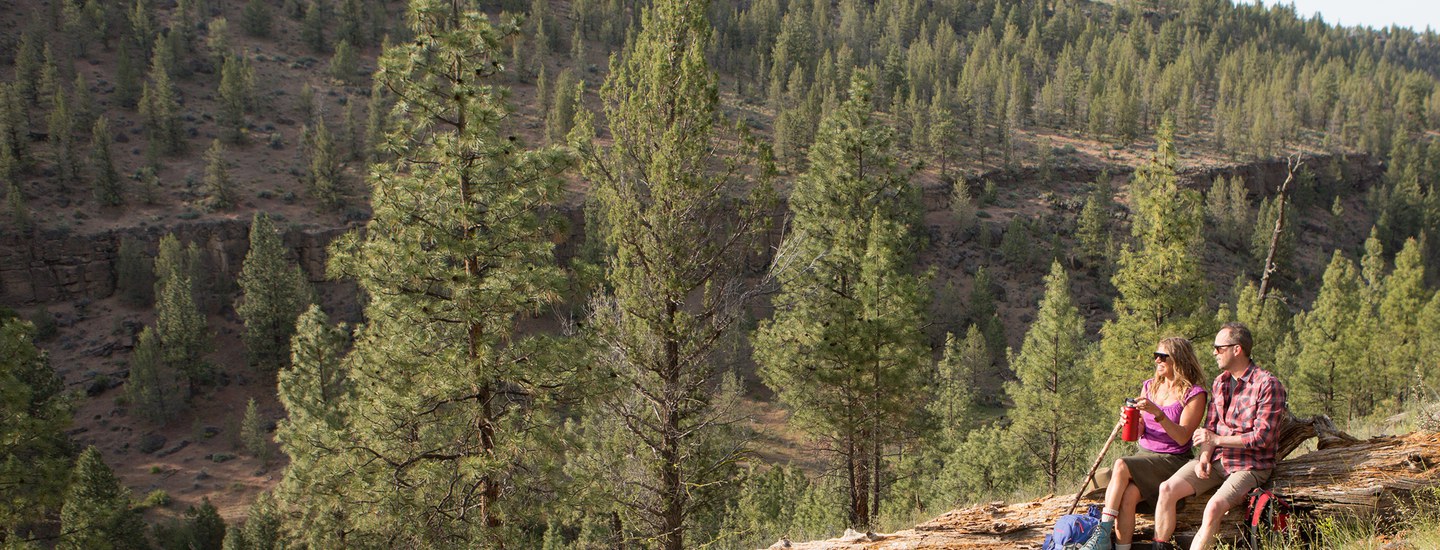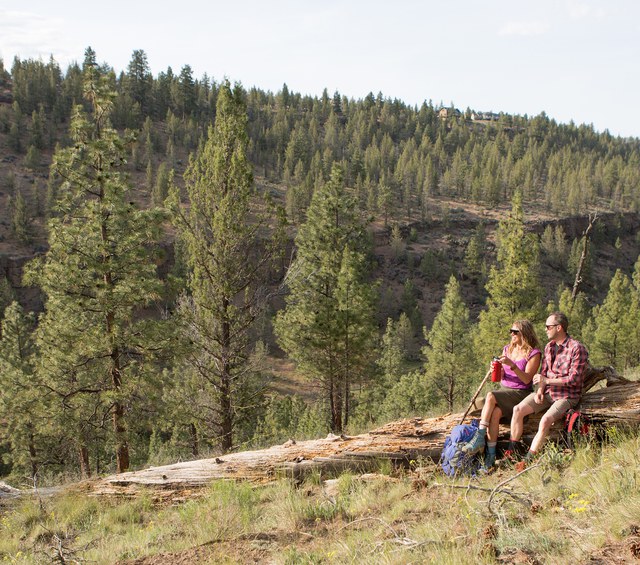The Land Trust first protected the lands and waters of Whychus Canyon Preserve in 2010. Since then we have added more acreage to the Preserve and completed multiple restoration projects! We’re proud to contribute to the long history of this outdoor space, including providing a network of trails for community access.
Spring is a beautiful time to enjoy this area. The Preserve contains four miles of Whychus Creek, grasslands, old growth juniper, and stands of cottonwood and aspen. Below are some of the many species of native plants and wildlife you might spot on your next hike.
Shrubs
Shrubs are likely the most readily visible and identifiable of the things you’ll see at Whychus Canyon Preserve. Shrubs provide important sources of food and shelter for many different animals in our region, and having enough of them is important to the overall health of our high desert environment.
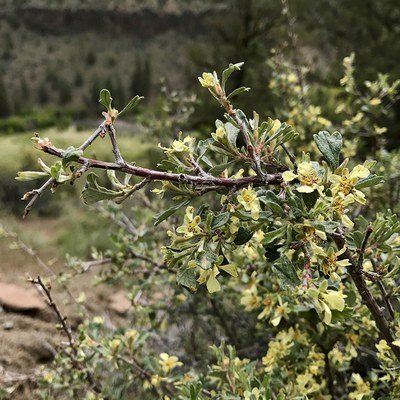
Bitterbrush (Purshia tridentata)
Bitterbrush is common across Central Oregon, especially in our sagebrush flats. This shrub has rigid stems and grows to be 3-10 feet tall. It blooms in late spring with flowers that are small with five yellowish petals. Leaves are thick and three-lobed with edges that roll under. Bitterbrush provides food for browsers like deer, elk, and pronghorn. Many birds and other small animals eat the seeds. Bitterbrush has leaves that are resistant to water loss and long taproots, making them well adapted to our relatively dry conditions.
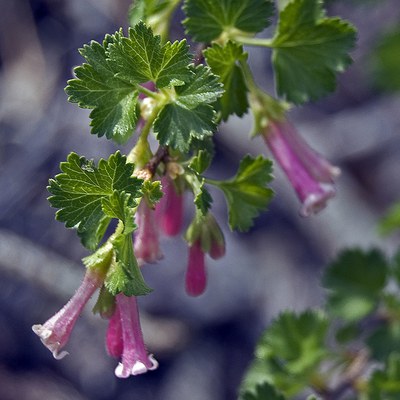
Wax currant (Ribes cereum)
A spring blooming shrub, wax currant grows 2-6 feet tall in mountain forests, sagebrush, and on the dry edges of forests. Leaves are gray-green, shiny, and finely toothed. In the spring and early summer, white to pale pink flowers shaped like long tubes hang in clusters from the tips of branches. Wax currant has an aromatic, "spicy" smell. It is enjoyed by birds (particularly hummingbirds), butterflies, and bees. It is a host plant for hoary comma and tailed copper butterflies.

This member of the honeysuckle family has pink bell-shaped flowers in the spring, and clusters of white berries in the fall and winter. It grows to between 2-5 feet tall, and does well in woodlands and along streams, forming thickets up to six feet wide. Snowberry provides nectar and habitat for bees, butterflies, and hummingbirds!
Wildflowers
In amongst the shrubs, you’ll surely see a multitude of other plants in their spring bloom. These plants not only add color and fragrance to the beauty of this area, but provide nutrients for wildlife and soil health alike! The three wildflowers listed below all bloom in the spring, making now the perfect time to see them!
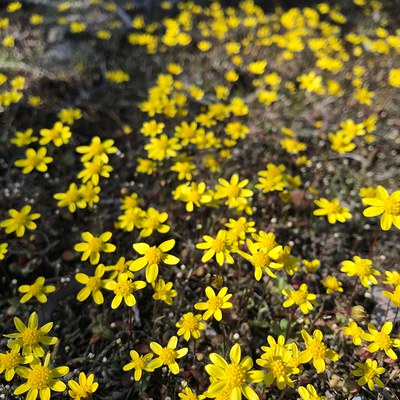
Goldfields are one of the first wildflowers to bloom each spring. These small, dime-sized flowers pop up in sagebrush flats. Goldfields have a single yellow flower with eight rays that are 1/4-1/2” long on a delicate stem up to 6” tall. They often carpet areas with bare ground, creating a showy display for such a small flower! These flowers are more often spotted along the top of the canyon, but rarely in the stream valley.
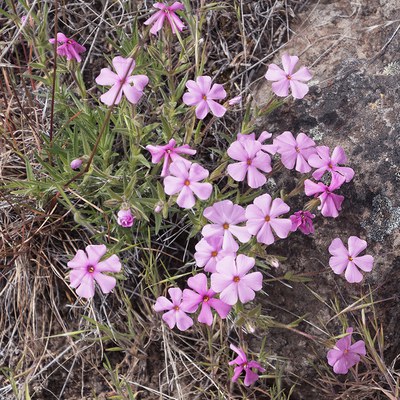
Spreading phlox (Phlox diffusa)
Spreading phlox are found low to the ground in rocky crevices and exposed areas. Check along the Rim Trails for their white, purple, and even hot pink flowers! Their flowers have five petals, and phlox often have taproots 8-15' deep, making them well-adapted to extreme environments.
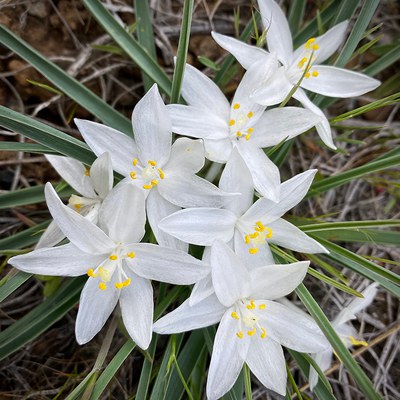
Sand lily (Leucocrinum monatanum)
The sand lily grows in rosette-like bunches with 4-8 white flowers per bunch. Flowers have six petals; leaves are 4-8”, flat and linear. Often spotted in sagebrush flats and pine forests, sand lilies look like delicate tissue-paper creations. The Wagon Road Trail and Meadow Trails are a great place to spot these flowers.
Birds
With so many different habitats represented, Whychus Canyon Preserve is home to a variety of fish and wildlife, but the animals you are most likely to see on your outing are the birds!

Calliope hummingbird (Selasphorus calliope)
The smallest hummingbird in the United States, calliope hummingbirds are around 3.25" long and weigh only 2.7 grams (the weight of a ping pong ball!). Like most hummingbirds, they are territorial, and calliopes have been known to chase off red-tailed hawks! Males have a streaked magenta throat with a white stripe across their cheek. Females have a pale, buff-colored chest. These birds feed on flower nectar and insects, and are found in meadows, canyons, and along streams.
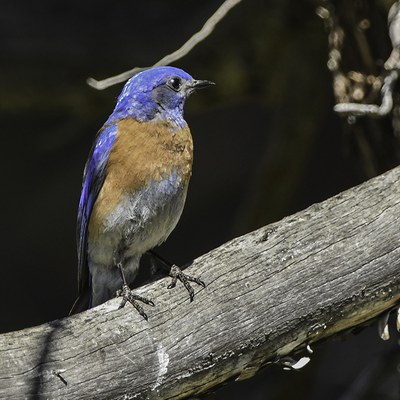
Western bluebird (Sialia mexicana)
Western bluebirds are a vibrant blue and rust colored bird, often seen feeding on insects and berries in flocks during the non-breeding season. These birds are around 7” in length with a wingspan of just over one foot. Western bluebirds utilize a technique called ground-sallying: they fly from a perch and briefly land on the ground to capture an insect or grab a berry before returning to their perch. Western bluebirds nest in tree cavities, but are unable to create their own holes, relying on woodpeckers to create them!
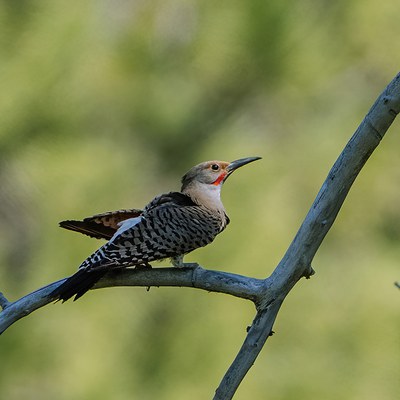
Northern flicker (Colaptes auratus)
Northern flickers are easily identified. With beautiful reddish-brown plumage spangled with black spots, and a rosy-red under their wings and tail feathers, they look like a bird dressed for the sunset. They have a slim head, slightly curved bill, white rump, and a long tail that tapers to a point. Males also have a bright red mustache stripe. Northern flickers mainly eat ants and beetles. They are slightly bigger than a jay, at just over one foot in length and with a 20 inch wingspan.
We hope you enjoy the beauty of Whychus Canyon Preserve, and the many plants and animals that call it home. Happy spring hiking!
Learn more:

